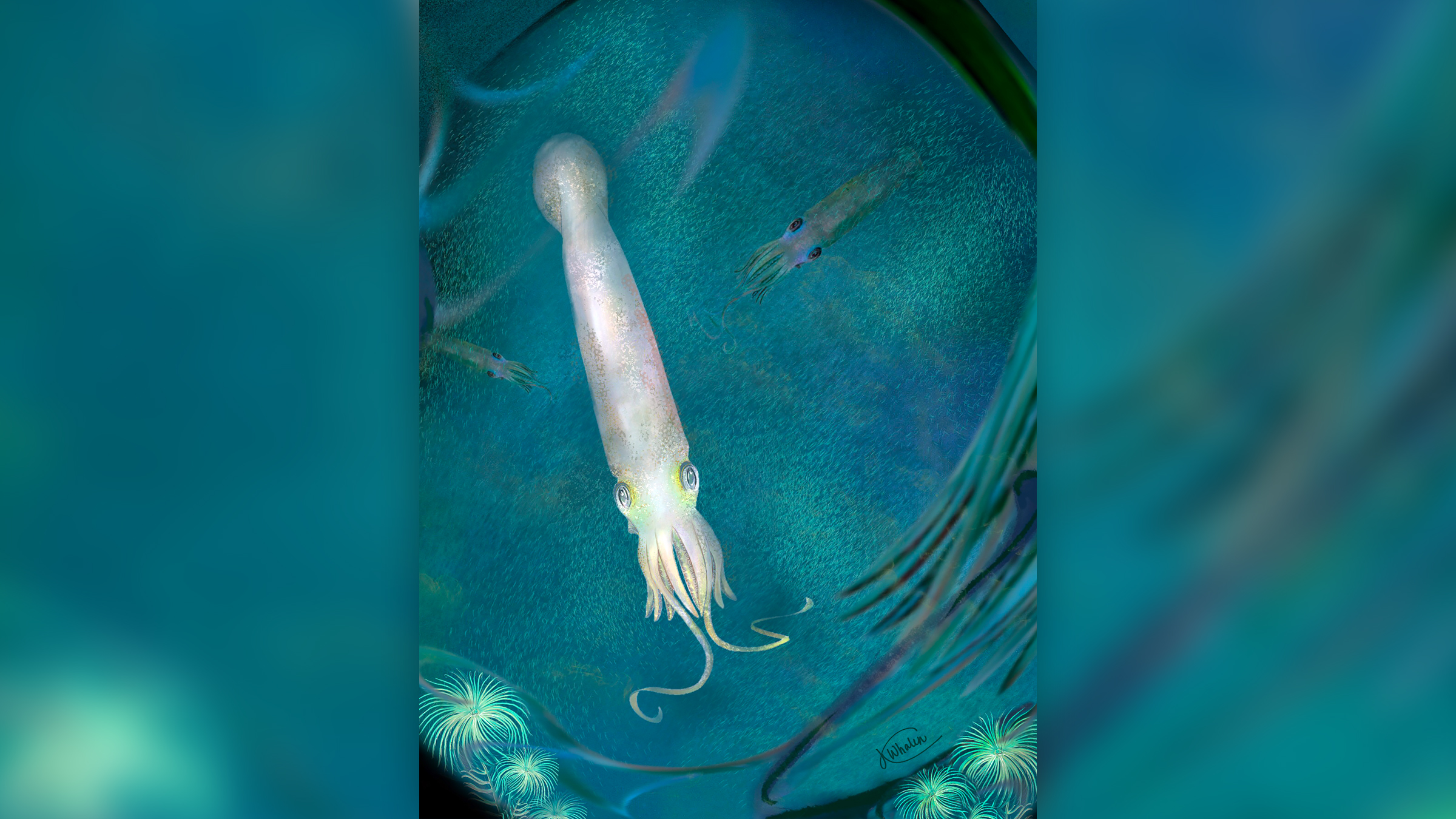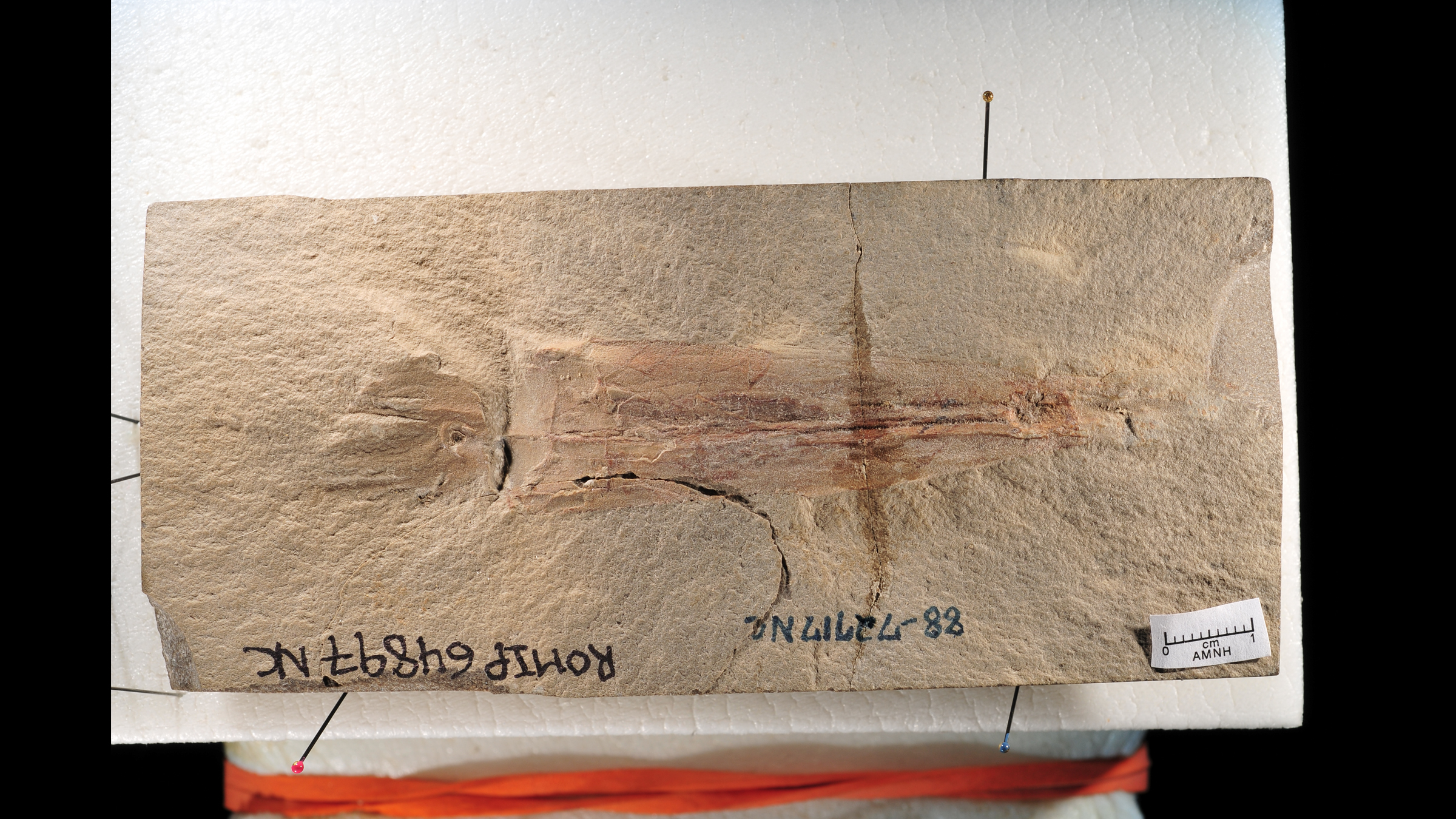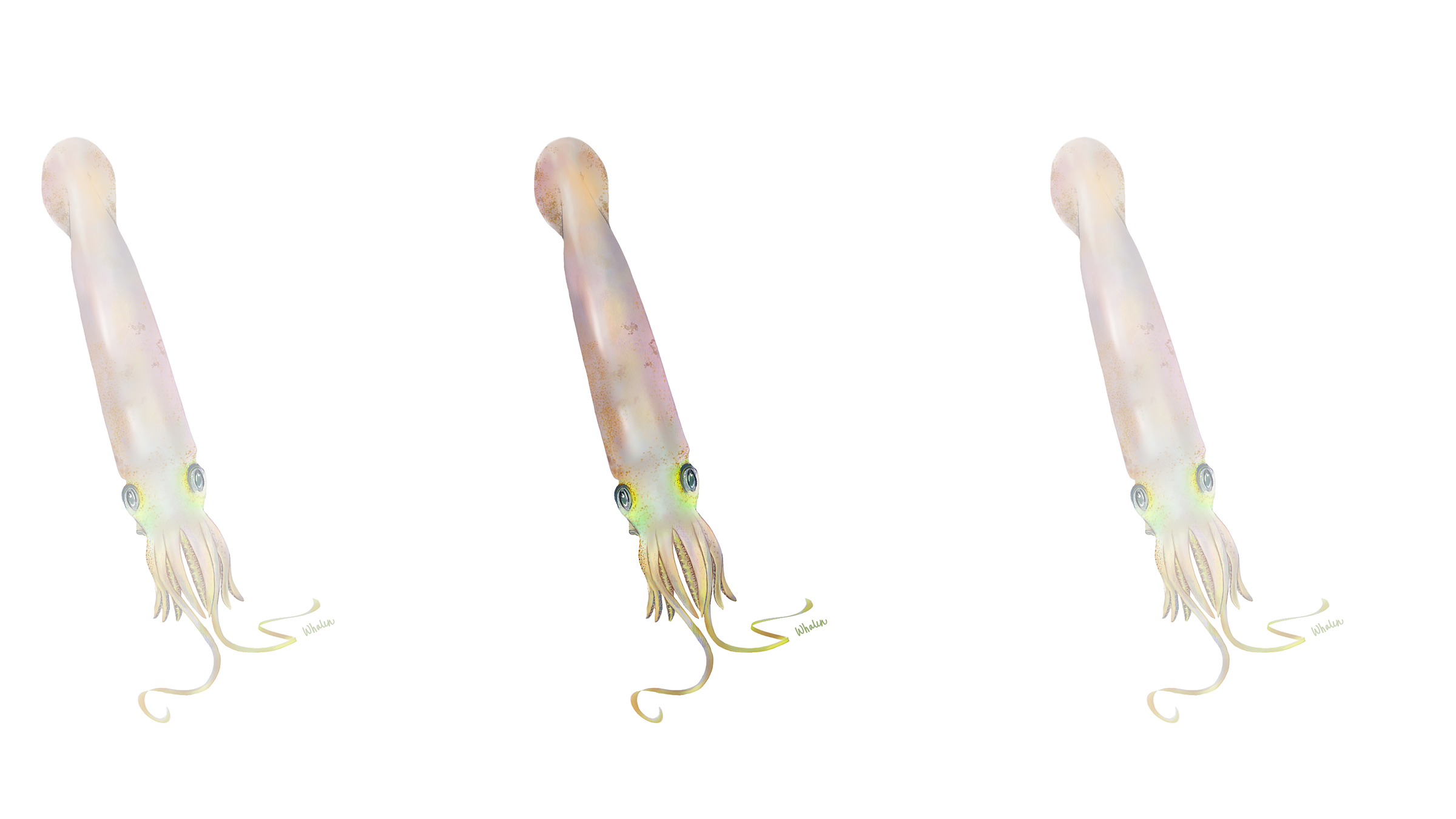Ancient 10-armed vampire squid relative named for Joe Biden
Its arms may have sported the first known suckers.
Octopuses and vampire squid are famous for their eight arms, but one of the oldest relatives of the group that includes them didn't get the memo. This newly described creature, named Syllipsimopodi bideni after President Joe Biden, had a total of 10 arms when it was alive during the Carboniferous period about 328 million years ago, a new study finds.
The beastie was wee, with a mantle (the body, not including the eyes or arms) measuring 3 inches (7.7 centimeters) long, about the length of an adult's palm. It's the oldest record ever of a vampyropod — a group that includes octopuses and vampire squid (Vampyroteuthis infernalis) — pushing the group's existence back 82 million years. The new date supports evidence from molecular clock models that calculate, based on the expected rate of genetic mutations, when an animal likely evolved, the researchers said.
Some scientists, however, disagree with the assessment of the creature, pointing out that parts of the fossil are difficult to interpret and that the specimen might belong to a previously known species that was described in the late 1980s.
Related: Photos of the vampire squid from hell
The vampyropod fossil was discovered in Fergus County, Montana and donated to the Royal Ontario Museum in Canada in 1988. But it remained unexamined until recently, when two researchers determined that it was a newfound species. Its 10 arms appear to have suckers, which would be the oldest known suckers of any cephalopod, a group that includes octopuses, squid and nautiluses, the researchers said.
Some cephalopods, like squids, cuttlefish and bobtail squids, have 10 appendages — eight arms and two longer tentacles. "Octopuses and squid are both types of cephalopods, but they're very distantly related," said study lead author Christopher Whalen, a National Science Foundation postdoctoral fellow of paleontology hosted at the American Museum of Natural History (AMNH) in New York City and co-hosted by the Department of Earth & Planetary Sciences at Yale University.
So, it was surprising that this newly described creature had 10 arms. "It's the earliest ancestor of octopuses [and] things related to octopuses, but it looks a lot like a squid," Whalen told Live Science.
Get the world’s most fascinating discoveries delivered straight to your inbox.
Vampire squid — which are not squid or vampires, but are named for the cloak-like webbing between their arms — have eight arms and two thin filaments. It's thought that these filaments are vestigial arms, which octopuses lost completely. "However, all previously reported fossil vampyropods preserving the appendages only have eight arms, so this fossil is arguably the first confirmation of the idea that all cephalopods ancestrally possessed ten arms," Whalen said in a statement.
"Prehensile-foot" Biden
Whalen and study co-author Neil Landman, a curator emeritus in the AMNH's Division of Paleontology, named the critter "Syllipsimopodi" from the Greek words for prehensile and foot. "The name prehensile-foot is chosen because this is the oldest known cephalopod to develop suckers, allowing the arms, which are modifications of the molluscan foot, to better grasp prey and other objects," the researchers wrote in the study. The species name honors Biden. "When we submitted the article, initially, it was actually just a few weeks after his inauguration," Whalen told Live Science.
Related: What's the difference between arms and tentacles?
When S. bideni was alive, North America was a very different place. Montana, near the equator, was submerged under a tropical marine bay. Seasonal monsoons swept across the region. Just like fertilizer runoff can lead to algal blooms today, it's possible that heavy rainfall brought on by the monsoons led to a rapid influx of nutrients in the water, which in turn could have led to oxygen-poor waters; a pristine environment for fossilization, Whalen said.
S. bideni likely ate the ancient creatures whose fossilized remains were found nearby in the formation, including crustaceans, sponges, brachiopods and conulariids, which are thought to be related to jellyfish. "It probably had a lifestyle similar to modern nearshore squid," Whalen said.
Outside take
Although the fossil is in fairly good shape, some parts are difficult to interpret. For instance, the researchers noted that each arm has two rows of suckers, rather than just one as was thought to have been present in the early relatives of vampire squid and octopuses, said Michael Vecchione, an invertebrate zoologist at the Smithsonian's National Museum of Natural History in Washington, D.C., who specializes in living cephalopods and was not involved with the study.
"That is really surprising to me," Vecchione told Live Science. It's possible that this interpretation isn't correct, he added.
And it's not clear if this fossil represents a new genus, said Christian Klug, a curator at the University of Zurich's Palaeontological Museum and a professor at its Palaeontological Institute, who was not involved in the study. The new specimen looks an awful lot like Gordoniconus, an early cephalopod, co-described by Landman, in 1988, from the same place in Montana.
"The proportions are identical, the size is identical [and the] conch shape is similar," Klug, who wrote about Gordoniconus in a 2019 study in the journal Communications Biology, told Live Science in an email. "Even if you accept that this is a different species: How likely is it to have two different species with almost identical shape in the same habitat?"
Whalen disagreed. "I also do not consider Syllipsimopodi to be similar to Gordoniconus in terms of proportion, size, or conch shape," he told Live Science in an email. Moreover, he noted "it is not in any way unusual for similar species to have overlapping ranges. For example, most people are used to seeing multiple species of similarly sized birds in their neighborhood; similarly, it would not be unusual to see multiple species of butterflies in the same garden at the same time."
The study was published online Tuesday (March 8) in the journal Nature Communications.
Originally published on Live Science.

Laura is the managing editor at Live Science. She also runs the archaeology section and the Life's Little Mysteries series. Her work has appeared in The New York Times, Scholastic, Popular Science and Spectrum, a site on autism research. She has won multiple awards from the Society of Professional Journalists and the Washington Newspaper Publishers Association for her reporting at a weekly newspaper near Seattle. Laura holds a bachelor's degree in English literature and psychology from Washington University in St. Louis and a master's degree in science writing from NYU.





